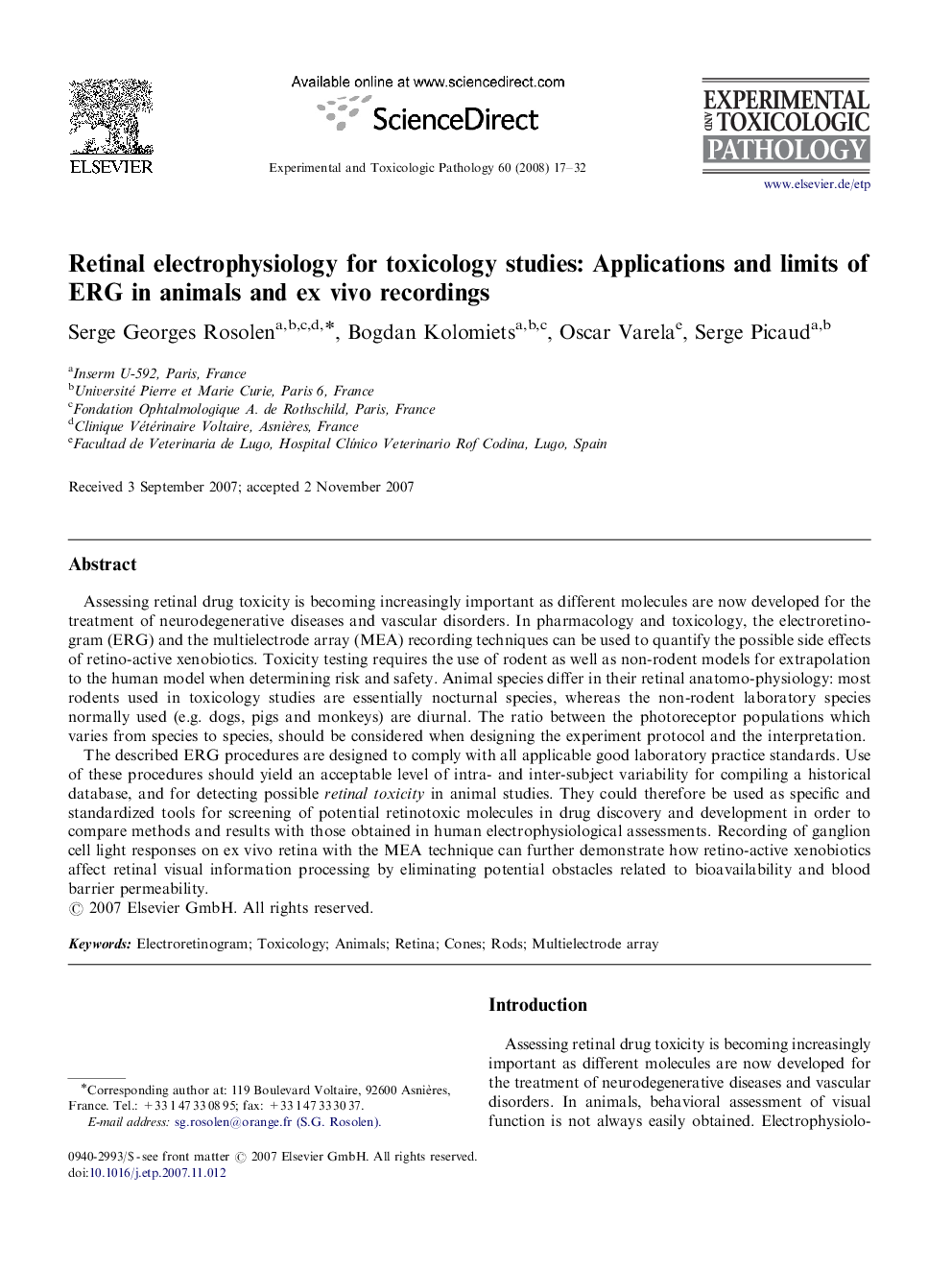| Article ID | Journal | Published Year | Pages | File Type |
|---|---|---|---|---|
| 2499237 | Experimental and Toxicologic Pathology | 2008 | 16 Pages |
Assessing retinal drug toxicity is becoming increasingly important as different molecules are now developed for the treatment of neurodegenerative diseases and vascular disorders. In pharmacology and toxicology, the electroretinogram (ERG) and the multielectrode array (MEA) recording techniques can be used to quantify the possible side effects of retino-active xenobiotics. Toxicity testing requires the use of rodent as well as non-rodent models for extrapolation to the human model when determining risk and safety. Animal species differ in their retinal anatomo-physiology: most rodents used in toxicology studies are essentially nocturnal species, whereas the non-rodent laboratory species normally used (e.g. dogs, pigs and monkeys) are diurnal. The ratio between the photoreceptor populations which varies from species to species, should be considered when designing the experiment protocol and the interpretation.The described ERG procedures are designed to comply with all applicable good laboratory practice standards. Use of these procedures should yield an acceptable level of intra- and inter-subject variability for compiling a historical database, and for detecting possible retinal toxicity in animal studies. They could therefore be used as specific and standardized tools for screening of potential retinotoxic molecules in drug discovery and development in order to compare methods and results with those obtained in human electrophysiological assessments. Recording of ganglion cell light responses on ex vivo retina with the MEA technique can further demonstrate how retino-active xenobiotics affect retinal visual information processing by eliminating potential obstacles related to bioavailability and blood barrier permeability.
